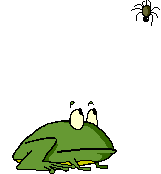When Consequences of a Behavior Increase the Likelihood That a Behavior Will Occur Again
Psy 443
 Understanding Consequences: Reinforcers
Understanding Consequences: Reinforcers
What are consequences?
What is a Reinforcer?
Examples of Reinforcers
What are consequences?
Consequences are the events that
- follow immediately after the target behavior and
- are contingent on the behavior (occur if only if the beliefs occurs)
In that location are 2 major kinds of consequences
- Reinforcers: which increase behavior they follow
- Punishers: which subtract behavior they follow
The label, reinforcer or punisher, is given later on examining the behavior for changes.
- It is non given on the basis of how most react to the effect.
- It is given on the basis of how the behavior of the particular discipline reacts to the upshot.
You can make an educated guess as to whether a particular outcome is probable to function as a reinforcer (e.m., candy) or as a punisher (e.g., a spanking). However, the proof is in the behavior.
What is a Reinforcer?
A reinforcer is any result that causes the preceding behavior to increase. The increase may exist in intensity, frequency, magnitude or another quality.
At that place are two subtypes:
- Positive
- Negative
ane. Positive Reinforcer
Events that increase behavior (and are contingent on the behavior) may be presented to the field of study (due east.g., candy). This is what most people remember of as a reinforcer. Its proper name is positive reinforcer.
Positive comes from medical terminology which ways that something is added or present (due east.g., when a examination for cancer comes back positive, it means cancer is present).
To learn more about Positive Reinforcement, including detailed explanations of reinforcers, visit Positive Reinforcement: A Self-Instructional Exercise (http://server.bmod.athabascau.ca/html/prtut/reinpair.htm)
2. Some other type of reinforcer
There is some other blazon of reinforcer.
Some behavior increases considering it allows the subject to avoid something. For example, cleaning the room allows a child to escape a parent's nagging. In this case, an upshot is subtracted or absent. This type of reinforcer is called a negative reinforcer (e.g., when a test for cancer comes back negative, it means in that location is no cancer). When the behavior is emitted, the unpleasant or aversive stimulus stops. The behavior allows the person to escape an aversive state of affairs and thus the behavior is repeated or increased the next time effectually.
| Positive Reinforcement | the presentation of some issue causes the behavior to increment. In the animation to the right, the frog looks up (behavior), sees a spider and eats it, enjoying the flavour (consequence). Based on the increased beliefs of looking upwards, the flavor of the spider is functioning as a reinforcer for looking upward. |  |
| Negative Reinforcement | the removal or avoidance of some outcome causes the behavior to increase. In the animation to the correct, the hockey goalie dives for the puck and stops it from entering his net. He avoids the loss of a point for his team. Therefore, his behavior of "diving for pucks" is likely to increase in the time to come. |  |
Discover that Positive and Negative Reinforcers may be operating simultaneously in the real globe. The frog avoids hunger (negative reinforcement) and the hockey histrion hears the cheers of the crowd (positive reinforcement). However, at that place is a primary mechanism in each instance. Even when he isn't very hungry, the frog is probable to scan the sky and may grab an occasional spider. Even if the oversupply wasn't there, the hockey thespian would still try to cease the puck to avert the loss of points (e.g., when playing at away sites).
Common Confusions
It is very common to misfile the term negative reinforcer with the term penalty. But call up that the key difference is, a negative reinforcer increases behavior and a punisher decreases behavior.
The more important function of the term "negative reinforcer" is the "reinforcer" function. A mutual mistake is to focus on the "negative" and think that means unpleasant. Actually the person is quite happy to avoid or escape the situation and will work hard (increase behavior) to do then.
It may help to think of the "positive" and "negative" as referring to the ii sides of a coin. You lot will piece of work to go the reinforcement and that may exist in social club to go the coin (positive reinforcer) or to avoid being without coins (negative reinforcer).
Very oft in real life examples, both types of reinforcers role together.
However, in many instances i or the other has a dominant role. For instance, in running from a burn down, avoiding being burned probable has greater immediate impact than whatsoever positive consequence waits at the terminate of the run. Immediacy is your guide to what to place greater weight upon. Which event (event) occurs more immediately?
On test questions, read questions carefully to see if any detail consequences are identified. But think, first await to meet what the behavior is doing (increasing-- reinforcement; decreasing--penalisation)
Examples of Reinforcers
These are hypothesized reinforcers for the average person. Whether or not they actually are depends on the modify in beliefs associated with them. Find that the accent is on immediate consequences.
Can y'all make full in the blanks with your hypotheses about possible reinforcers? Possible answers below
| Behavior | Positive Reinforcer | Negative reinforcer |
| Sleeping | feel alert | avert feeling tired; avoid doing schoolhouse work |
| Studying | experience knowledgeable, praise self; become to go to sleep | avoid worry over low grades |
| Cursing | seeing shock/attention on someone'south face | feel some release from musculus tension |
| Paying bills | seeing the neat piles of paid bills | avert worrying about debt |
| Asking a question in class | receive an respond | avert defoliation |
| Eating soup when you take the influenza | i. | avert nausea |
| Swatting a fly | ii. | escape the buzzing annoyance |
| Walking into class late | attention when arrive | 3. |
| Turning downward the loud radio | enjoying the serenity | 4. |
Suggested answers for a typical human every bit subject.
- fills a hungry stomach
- feeling of success at communicable the wing
- avoid having to socialize with others earlier class
- avoid a headache from the dissonance
Here are some on-line sites that offering further examples or activities
An Practice to Help You Empathize Consequences (http://world wide web.wku.edu/~emerge.kuhlenschmidt/psy443/cqtrng.htm)
Contact the author with comments or questions almost this site by post-obit the directions at this page (which will open in a new window.)
All contents © since 1996 by Emerge Kuhlenschmidt. Copy simply with permission.
Website created: June 1996. Page Created: September twenty, 1999. Terminal Modified: Feb 10, 2015.
Source: https://people.wku.edu/sally.kuhlenschmidt/psy443/conreinf.htm
0 Response to "When Consequences of a Behavior Increase the Likelihood That a Behavior Will Occur Again"
Post a Comment